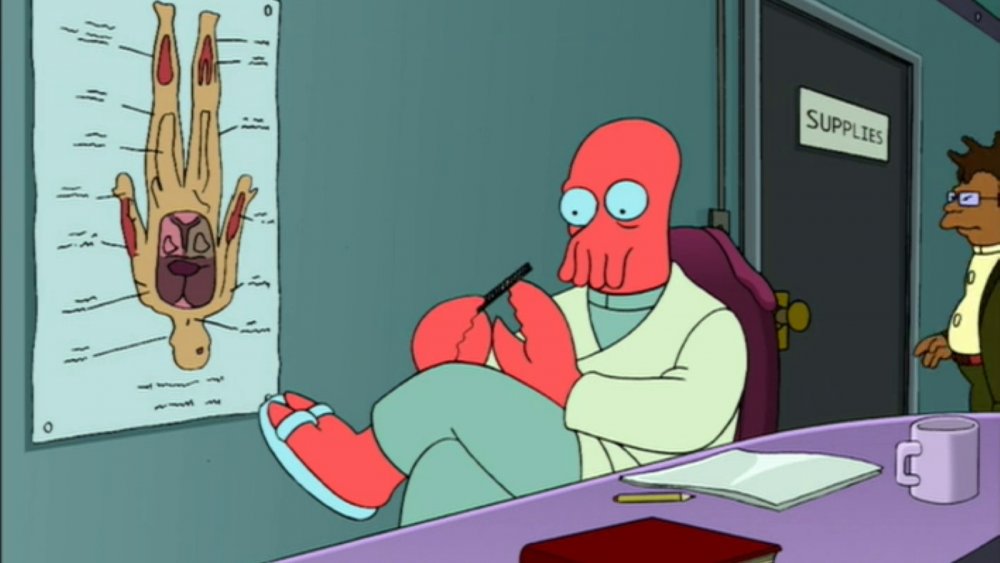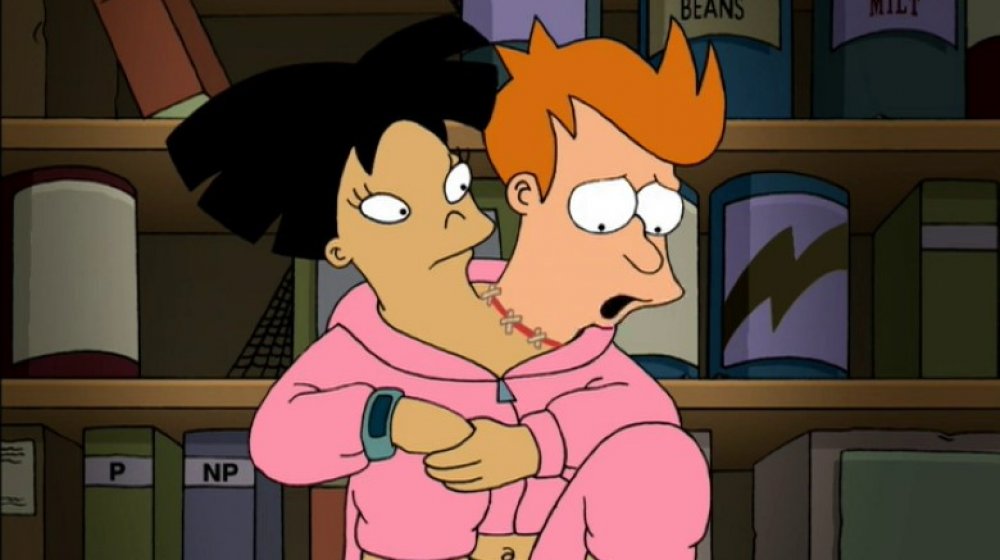Why This Supply Closet In Futurama Means More Than You Think
The writers of Futurama did a fantastic job of hiding Easter eggs throughout the cartoon. They have plenty to work with, given that the show is a sci-fi comedy based in the 31st century. No one knows what 1,000 years in the future will look like, so the writers were creatively free to put whatever insanity they wanted to in their fictional future. It also helps that they are all pretty smart folks, with a wealth of post-secondary education to draw from. According to Nerdist, the writing team had seven master's degrees and three PhDs to work with.
While there are plenty of wacky, literally out-of-this-world locations in Futurama, though, at least one of them is always consistent, and that's the Planet Express headquarters. The crew of the company often gathers around a circular table within to hear the Professor's lunatic ramblings just before being sent on a mission that would likely result in their deaths, if they weren't integral to the show. In this very home base, of course, the Futurama writers didn't hold back on sliding in more Easter eggs ... and one of them lies in the supply closet.
A box of computer problems on the shelves
In the Futurama episode "Put Your Head on My Shoulders," a short-lived love blossoms between Amy Wong and the Planet Express crew's low-functioning delivery boy, Fry. They start doing "it" anywhere they can find a little privacy, including the supply closet. At one point, after Fry's head is surgically implanted next to Amy's, they revisit the supply closet, and on the shelves behind them, below a can of "Emergency Beans" and "Condensed Milt," are two boxes. One is labeled "P," another labeled "NP."
The boxes reference a famous theoretical computer science problem known as "P vs. NP." To give you an idea of how important this problem is, the Clay Mathematics Institute has offered $1 million to anyone who can definitively prove that P either does, or doesn't, equal NP, according to MIT News. "P" stands for problems solved in polynomial time. Basically, they're relatively quick and easy. Everything else is classified as "NP." The equation "P = NP" says that a computer can solve these complicated NP problems with as few moves as it uses to solve the P problems. So, in its essence, "P = NP" means computer algorithms could find a way to simplify extremely complicated problems that require a lot of individual executions, down to ones that only require a handful of steps. Of course, the majority of computer scientists don't think that this can be done, but none have proven it can't.
The P vs. NP question has led to several important discoveries in the computer science world, that most laypeople wouldn't understand. Ken Keeler, though, who wrote the episode and holds a PhD in applied mathematics from Harvard (and has admitted to injecting math humor into other parts of the show) would most definitely get it.

